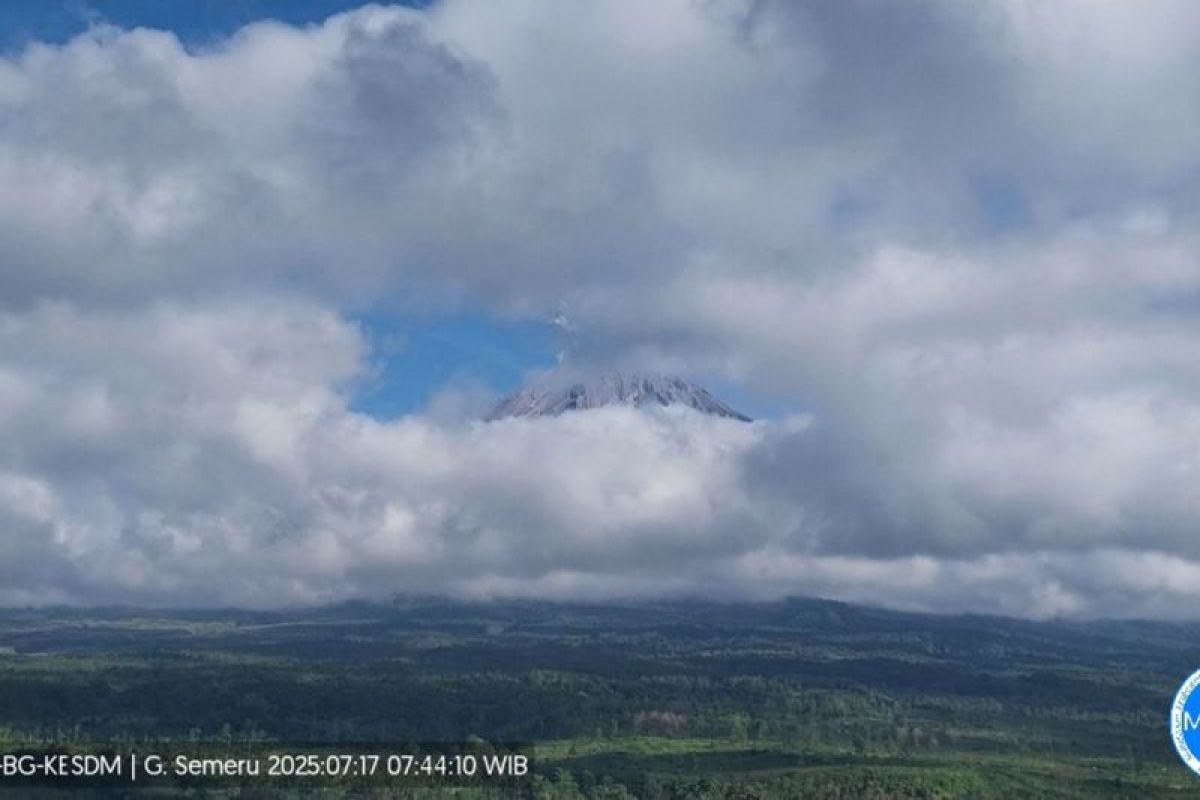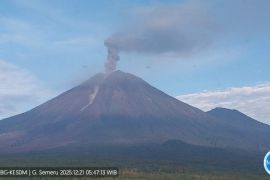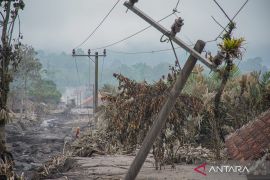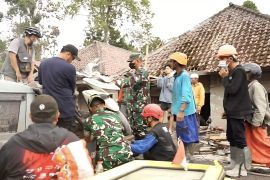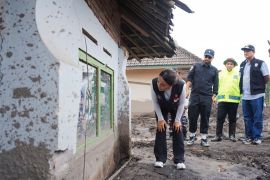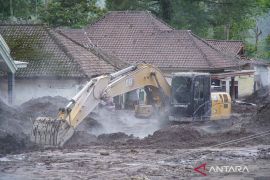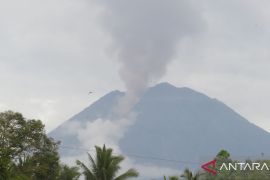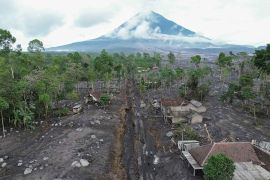The first eruption occurred at 4:30 a.m. local time, producing an ash column approximately 800 meters above the summit. The ash column was observed to be gray, with moderate to thick intensity, moving westward.
The eruption was recorded on a seismograph with a maximum amplitude of 22 mm and a duration of 170 seconds.
"At 7:42 a.m. local time, Mount Semeru erupted again, with an ash column observed at approximately one thousand meters above the summit, or 4,676 meters above sea level," an officer at the Mount Semeru Observation Post, Mukdas Sofian, stated in a written report.
He noted that the ash column was observed to be white to gray with thick intensity, drifting to the southwest. The eruption was recorded on a seismograph with a maximum amplitude of 22 mm and a duration of 158 seconds.
Eruption earthquakes dominated Mount Semeru's activity during the 24-hour observation period on Wednesday (July 16), with 32 events recorded, having amplitudes of 10-22 mm, followed by four avalanche earthquakes with amplitudes of 4-6 mm.
Eight emission earthquakes with amplitudes of 4-8 mm, one harmonic earthquake with a 15 mm amplitude, 22 local tectonic earthquakes with amplitudes of 5-12 mm, and three distant tectonic earthquakes with amplitudes of 5-15 mm were also detected.
Sofian stated that Mount Semeru's status remains at Level II. The Center for Volcanology and Geological Hazard Mitigation (PVMBG) has issued several recommendations, including prohibiting the public from engaging in any activity in the southeastern sector along Besuk Kobokan, eight kilometers from the summit, the eruption epicenter.
Beyond that distance, the public is advised not to conduct activities within 500 meters of the riverbank along Besuk Kobokan, due to the potential for pyroclastic flows and lava flows reaching up to 13 kilometers from the summit.
Sofian urged the public to remain alert for possible pyroclastic flows, lava avalanches, and lava flows along rivers and valleys originating from Mount Semeru's summit, especially along Besuk Kobokan, Besuk Bang, Besuk Kembar, and Besuk Sat, as well as possible lava in smaller rivers that are tributaries of Besuk Kobokan.
Related news: Mount Semeru erupts again, sends ash 800 meters above summit
Related news: Semeru erupts four times, ash reaches 1.2 kilometers
Translator: Zumrotun Solichah, Resinta Sulistiyandari
Editor: Primayanti
Copyright © ANTARA 2025
